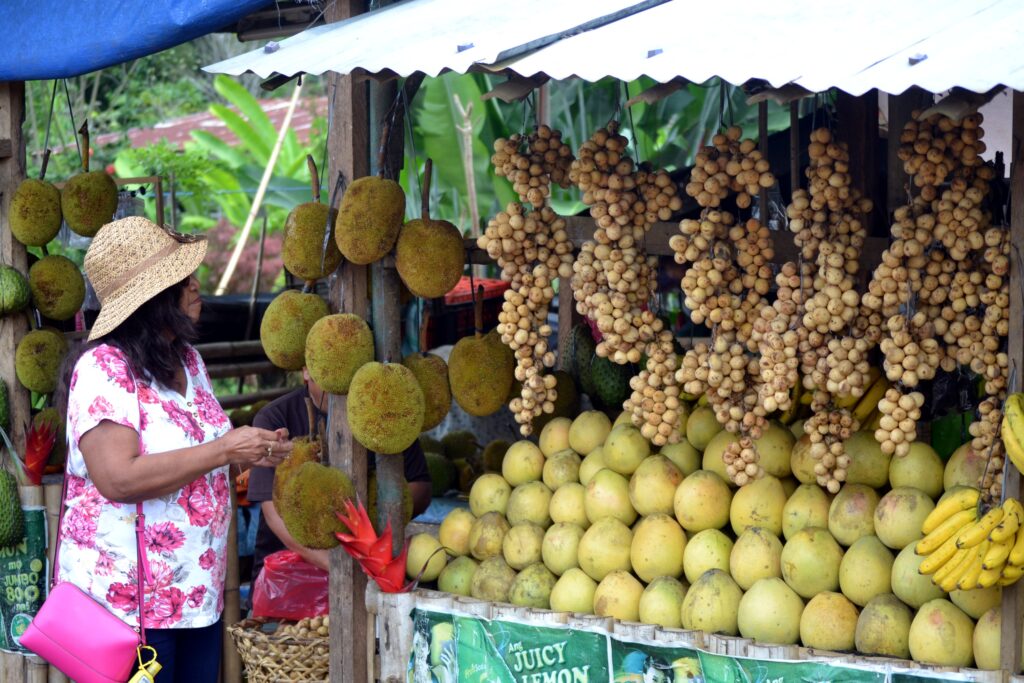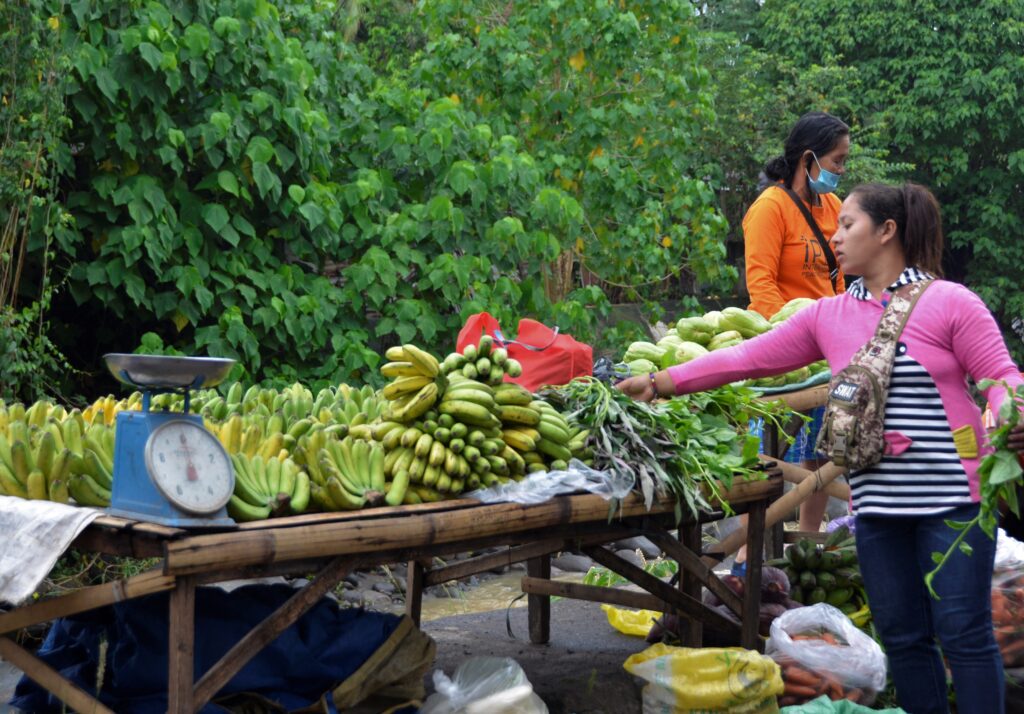Text and Photos by Henrylito D. Tacio
“As current global pandemic and recent calamities put more pressure on every sector of society to be innovative, it is high time to emphasize the positive impacts of biotechnology on the various sectors especially in the area of environmental protection and sustainability, which also encompasses food production and consumption.” – Dr. Glenn B. Gregorio, director of Southeast Asia Regional Center for Agriculture
***
“We need biotechnology to combat against population increase, poverty, hunger, natural resources depletion, diseases, natural calamities and disasters, and too much dependence on synthetic agrochemicals,” wrote Lorna Malicsi, when she was still an information officer of the Laguna-based Philippine Council for Agriculture, Aquatic and Natural Resources
Research and Development (PCARRD).
She added that the uses of biotechnology will go on “and more of it in the next years to come.” To biotechnology critics, she begged: “Let’s open our doors and considers the merits of biotechnology: it can increase food and other resources for an equally increasing population in the Philippines and throughout the world; it can also be a tool to strengthen plant and animal resistance to pests and diseases; it can be used to invent medicines to cure, as in the case of insulin, a diabetic treatment; and many more. Let’s stop for a while, try and see for ourselves the merits of biotechnology.”
It is in food production where biotechnology, scientists believe, plays an important role. In fact, biotechnology has been identified as among the possible solutions to the forthcoming food crisis.
The United Nations Convention on Biological Diversity defines biotechnology as “any technological application that uses biological systems, living organisms, or derivatives thereof, to make or modify products or processes for specific use.”
Actually, biotechnology comes from two words. Bio is derived from the Greek word bios, which means life. Technology is the making, modification, usage, and knowledge of tools, machines, techniques, crafts, systems, methods of organization in order to solve a problem, improve a preexisting solution to a problem, achieve a goal, handle an applied input/output relation or perform a specific function.
“All possible tools that can help promote sustainable agriculture for food security must be marshalled, and biotechnology, safely developed, could be a tremendous help,” said Ismail Serageldin during his stint as vice-president of the World Bank.

Fruits abound
Ancient technology
Biotechnology has existed since ancient times. Spirulina, one of the oldest forms of life on earth, is believed to be what the ancient Israelites of the Old Testament called “manna from heaven.”
In the Philippines, biotechnology has been practiced since the 16th century. Filipinos in the past had been using it in preparing their drinks like basi from sugarcane, tuba from coconut and other palm trees, and tapuy (the Pilipino version of Japanese sake or rice wine). Beer is a product of biotech, and so are patis (fish sauce), suka (vinegar), bagoong, cheese (white or otherwise), and other products of fermentation.
The modern era of biotechnology, however, had its origin in the 1950s when American biochemist James Watson and British biophysicist Francis Crick presented their “double helix” molecular model of DNA (deoxyribonucleic acid). Both received a Nobel Prize for their collaborative work in 1962.
Science says DNA, the genetic material of all cellular organisms and most viruses, carries the information needed to direct so-called “protein synthesis” and “replication.” Protein synthesis is the production of the proteins needed by the cell or virus for its activities and development. Replication is the process by which DNA copies itself for each descendant cell or virus, passing on the information needed for protein synthesis.
In the 1960s, Britannica Encyclopedia reported that Swiss microbiologist Werner Arber discovered special enzymes, called restriction enzymes, in bacteria. These enzymes cut the DNA strands of any organism at precise points.
In 1973, geneticist Stanley Cohen and biochemist Herbert Boyer – both American scientists – removed a specific gene (a piece of the genetic material that determines the inheritance of a particular characteristics or group of characteristics) from one bacterium and inserted it into another using restriction enzymes.
This event marked the beginning of recombinant DNA technology, commonly known as genetic engineering. Also known as genetic modification or bioengineering, it is the alteration of an organism’s genetic, or hereditary, material to eliminate undesirable characteristics or to produce desirable new ones.
In its wider sense, biotechnology also includes biological processes used in the food industry. Some of these have been used for centuries, like yeasts to help bread rise and convert sugar into alcohol in brewing and bacteria to digest sugars and add flavor in cheese making. But these techniques all use naturally occurring organisms. Genetic engineering creates viruses, bacteria, yeasts, plants, and animals that have never occurred in nature.
“Today, our growing ability to directly alter an organism’s genetic makeup is having a major impact worldwide on agriculture and animal husbandry,” maintains Denise K. Casey, a science writer, and educator with the US Department of Energy’s Human Genome Management Information System at Oak Ridge National Laboratory. “A number of ongoing projects aim to decipher and manipulate the genomes of such economically important organisms as rice, corn, wheat, soy, cotton, sheep, goats, cows, pigs, and fish.”
The Philippine government invested in biotechnology in the late 1970s with an objective to increase agricultural production and productivity by using biotechnology on the following key crops: corn, banana, mango, papaya, and eggplant.
In 1979, it established the National Institute of Biotechnology and Microbiology (Biotech), now called the National Institute of Molecular Biology and Biotechnology, at the University of the Philippines Los Baños (UPLB).

In the mid-1980s, the Department of Science and Technology (DOST) identified biotechnology as a priority investment area and developed the UPLB science park for business incubation.
The country’s leading research institutions, Philippine Rice Research Institute, Philippine Carabao Center, and National Fisheries Research Institute, was organized by the Department of Agriculture into a network of biotechnology research centers for crops, livestock, and aquatic resources, respectively.
At the time of Science Secretary Filemon Uriarte Jr, biotechnology was seen as having a bright future in the country. “Modern techniques in biotechnology have vastly increased the speed at which nature could be manipulated to serve society’s needs,” he pointed out. “Biotechnology, in conjunction with other emerging technologies, will undoubtedly be a major source of innovation and growth in coming decades.”
Dr. Estrella F. Alabastro, another science secretary, thinks so, too. “The principal challenge in biotechnology research is how to realize the promise of benefits and advantages from this cutting-edge technology for developing countries (like the Philippines),” she said.
Rapid population
Population growth, rapid urbanization – in developing countries like the Philippines, urban populations will increase much more rapidly than rural ones – income increases, and dietary changes will all result in an increasing demand for food.
One estimate suggests that cereal demand will grow by about 80% in developing countries and by 55% in the world as a whole. Demand for meat will surge by a staggering 160% in developing countries, though from a very low level, and 75% worldwide.
Food producers will have little choice but to use genetically modified crops to feed the growing population, according to American agribusiness specialist John Baize. “People need to look ahead and see what we are facing now.”
Nobel Peace Prize laureate Normal Borlaug also maintained, “If the naysayers do manage to stop agricultural biotechnology, they might actually precipitate the famines and the crisis of global biodiversity they have been predicting for nearly 40 years.”
In 1994, food manufacturer Calgene obtained the first approval to commercialize a genetically modified food product in the United States when it marketed its Flavr Savr delayed-ripening tomato.
Today, as much as 70% of the foods on US grocery store shelves may contain ingredients derived from genetically modified (GM) corn, soybeans, potatoes, and other crops, in everything from cereal to salad dressing to potato chips.
In Europe, GM soya can be found in bread, biscuits, baby milk, pasta, pizza, instant meals, meat products, flours, sweets, ice cream, crisps, chocolate, soy sauce, veggie burgers, tofu, soya milk, and pet foods.
Safe to eat?
But the big question is: Are biotech crops safe to eat?
Genetically modified foods have undergone more testing than any other food in history. Before entering the food market, they are assessed consistent with guidelines issued by several international agencies like the World Health Organization, UN Food, and Agriculture Organization, and Organization for Economic Cooperation for Development.
These are the guidelines used:
* Biotech products should be regulated in the same way as foods produced by other methods. The risks associated with foods derived from biotechnology are of the same nature as those for conventional foods.
* These products will be judged on their individual safety, allergenicity, toxicity, and nutrition rather than the methods or techniques used to produce them.
* Any new ingredient added to food through biotechnology will be subjected to pre-market approval in the same way a new food additive, such as a preservative or food color, must be approved before it reaches the food market.
A 2008 review published by the Royal Society of Medicine noted that GM foods have been eaten by millions of people worldwide for over 15 years, with no reports of ill effects. Likewise, a 2004 report from the US National Academies of Sciences stated: “To date, no adverse health effects attributed to genetic engineering have been documented in the human population.”
The 2010 report of the European Commission Directorate-General for Research and Innovation on GMOs noted: “The main conclusion to be drawn from the efforts of more than 130 research projects, covering a period of more than 25 years of research, and involving more than 500 independent research groups, is that biotechnology, and in particular GMOs, are not per se more risky than conventional plant breeding technologies.”
The last known biotech food survey among Filipino consumers was in 2008 by the Singapore-based Asian Food Information Center. “The survey indicated that 59% of Filipino consumers had a positive perception of biotechnology and 73% believe they would benefit from food biotechnology in the next five years through improved quality and more affordable prices,” the report stated.
Wave of the future
“Biotechnology is the wave of the future,” declares Dr. Saturnina Halos, one of the country’s biotech experts, “and it would help agricultural communities increase their production, improve their incomes and provide consumers with nutritious and disease-resistant food products.”
The Philippines remains a biotechnology leader in Asia, according to the Global Agricultural Information Network (Gain) report. Since its introduction, the area planted to biotech corn reached over 5.9 million hectares. From April 2016 to March 2017, biotech corn was planted on an estimated 655,000 hectares, relatively flat compared to the previous year’s level.
Aside from the Philippines, there are other 25 countries that are growing GM crops. The top five countries are Canada (911.6 million hectares planted to GM crops), United States (78.2 million hectares), Brazil (49.1 million hectares), Argentina (23.8 million hectares), and India (0.8 million hectares).
At a time of rapid advances in modern science and technology, the persistence of hunger and extreme poverty is indefensible. And one possible solution to the problem is, as stated earlier, biotechnology. One sage puts it in perspective: “A man who has enough food has several problems. A man without food has only one problem.”

